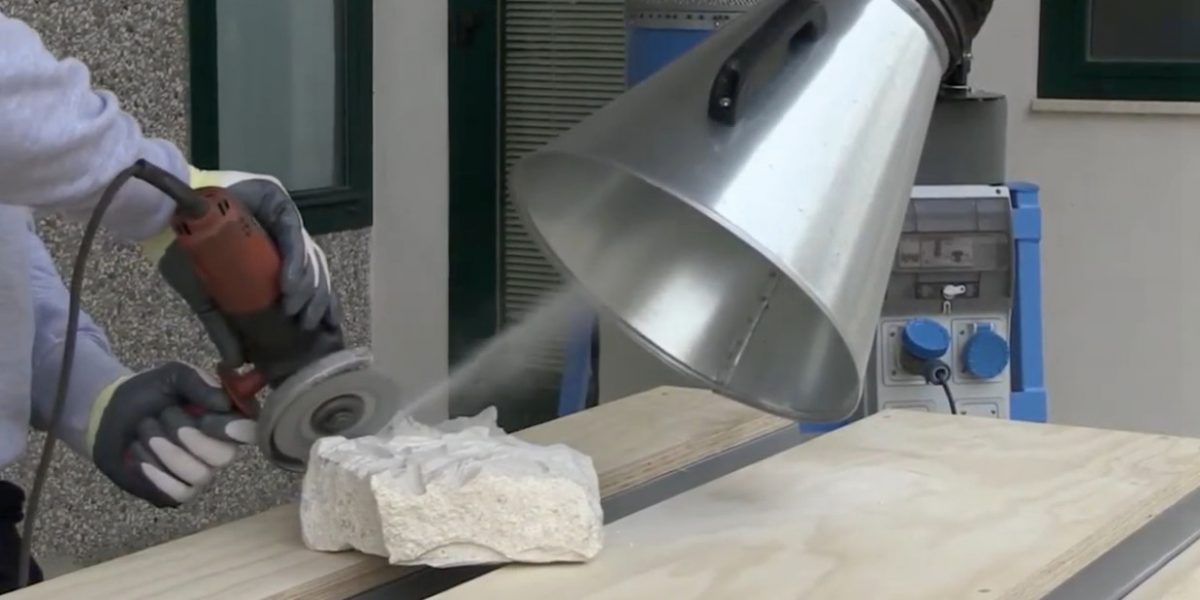Quartz Dust Information
Fabrication professionals often times use engineered quartz for hard surfaces in homes, businesses, and other environments. The fabrication process involves a number of tasks that generate dust. In this article we will take a look at some work related tasks that create quartz dust. Information about dust generated from working quartz can be beneficial if you work in the fabrication industry.
What is Engineered Quartz?
Engineered quartz is merely one material that people think of when someone mentions industrial dust collection systems. Yet, even though there are many industries that make use of dust collection equipment, there some very good reasons for using dust collection for it. Let’s look at some basic information regarding quartz dust and why it is good to reduce exsposure to its dust.
Working Quartz Generates Dust
As you may know, engineered quartz fabrication involves cutting, grinding, drilling, and polishing the surfaces. These actions are performed using diamond tools like bridge saw blades, core bits, and polishing pads. Diamond tools generate dust when they are used. Especially in dry environments, the dust produced from working with engineered quartz can hang around in the air. This dust then could be breathed by anyone in the area.
Is the Dust Dangerous?
It can be very tempting to think about dust from engineered quartz as no big deal. But the fact of the matter is, there are OSHA standards in place when it comes to working with quartz. Why? Because engineered quartz contains respirable crystalline silica which can cause lung problems.
Exposure to Quartz Dust
Exposure to respirable crystalline silica can be detrimental to the health of the individuals exposed. Manufacturing and processing engineered quartz materials seems to be related to silicosis more and more as attention and awareness grows. The increased number of cases was described in this article by the CDC.
In the above mentioned article, the CDC states the following:
Silicosis is preventable when exposure to respirable silica dust is minimized through effective engineering controls and work practices.
By reducing exposure to silica dust using a dust collection system in conjunction with other practices, the work place is made safer. This is because there are health risks associated with breathing silica dust.
Health Effects of Breathing Dust
As we have already considered, the dust that comes from engineered quartz contains silica particulates that can be breathed. Inhaling dust that contains silica impacts the body in more than one way. The obvious area in which damage can occur is the lungs. However, there are other detrimental effects stemming from silica dust inhalation. We won’t go into them in deail here since that is not the subject of this post. However, some of the hazards that result from breathing respirable crystalline silica include:
- Silicosis
- Lung Cancer
- Kidney Disease
- COPD
- Tuberculosis
- Chronic Bronchitis
- Autoimmune Diseases
As you can see, protection from beathing silica dust is not to be taken lightly. Implementing OSHA standards in shops where engineered quartz is processed or fabricated improves the safety of workers.
OSHA Guidelines for Quartz Dust Exposure
OSHA offers published documents that communicate its regulations for silica as it pertains to construction.
There are all sorts of factors that can affect the degree of risk. Variables like the type of material, the tools being used, and the environment play a role. The dust collection methods and dust control procedures implemented by a particular company are what make the difference in safety for the most part. And often times, quartz fabrication shops will use multiple methods of dust control and dust collection.
So in conclusion, engineered quartz is a material that fabricators use which contains silica. The material itself is safely usable for kitchen countertops, flooring, and even wall tiles. Yet, during the fabrication process, dust is generated and having effective methods in place for managing the dust so it is not breathed by anyone in the area goes a long way toward a safe fabrication shop.
Quartz Dust Collectors

